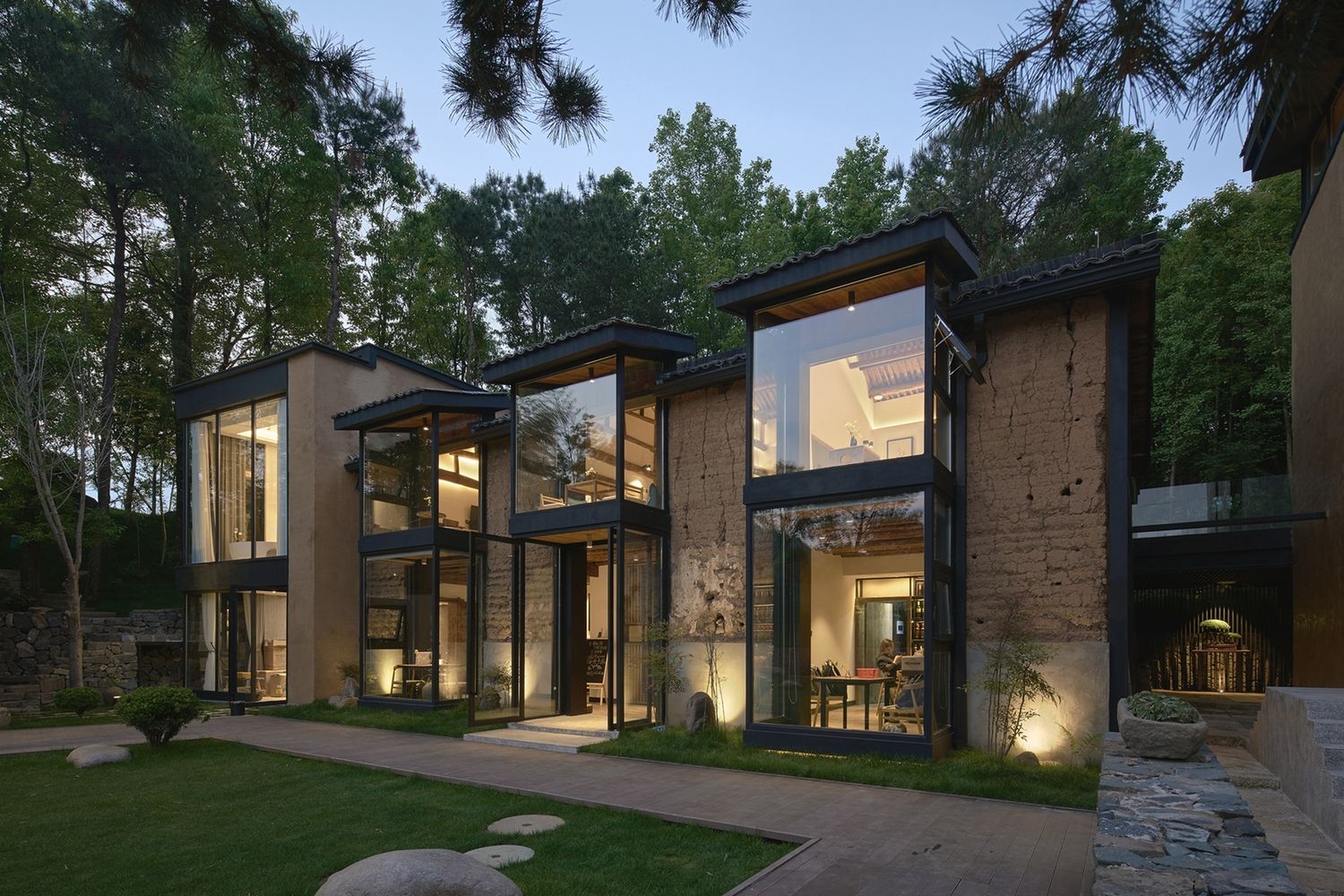#12427. Organic facade: natural walls and glass in a forest context
The architectural solution presented demonstrates a masterful combination of traditional and modern elements in the facade design. The building features an unconventional composition with vertical volumes of varying heights, united by a common concept of transparency and materiality. The facade represents a harmonious combination of raw earthen/clay walls (possibly using rammed earth or adobe technique) with contrasting black frames of large panoramic windows.
Particularly impressive is the interplay between the massiveness of natural walls and the lightness of glazed areas. The clean geometric forms of the window openings create a rhythmic composition on the facade. The architect skillfully used double-height glass spaces that not only fill the interior with natural light but also visually lighten the overall mass of the building. The evening lighting shining through the large windows enhances the "lantern" effect and highlights the texture of the natural walls.
The design shows a respectful attitude toward the surrounding environment — the house is organically integrated into the forest landscape, and the use of natural materials contributes to its contextual integration. For private construction, several techniques can be borrowed from this example: the contrasting combination of textural materials with modern elements; the use of large windows to create a connection with nature; thoughtful work with evening lighting that emphasizes architectural details; and the division of the building volume into visually separate blocks to reduce the monumentality of the structure.
